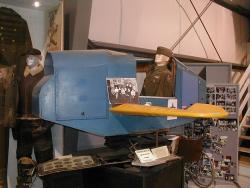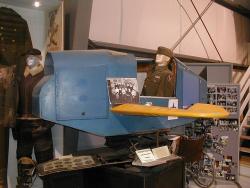During the 1920s, Edwin A. Link was employed in his father's organ building and repair business. He obtained his pilot's license in 1927 and became convinced that a mechanical device could be built as an inexpensive method to teach basic piloting. Link received three patents on his flight trainer (No. 1,825,462, March 12, 1930; No. 2,244,464, June 3, 1941; and No. 2,358,016, Sept. 12, 1944).
Simulator

BinghamtonState: NYZip: 13905Country: USAWebsite: https://www.asme.org/about-asme/who-we-are/engineering-history/landmarks/210-link-c-3-flight-trainerCreator: Link, Edwin
YearAdded:
Image Credit: Courtesy Wikipedia/Tony SpeerImage Caption: An early flight simulator representative of the first truly effective mechanical device used to simulate actual flight processes.Era_date_from: 1935
2000
Innovations

During the 1920s, Edwin A. Link was employed in his father's organ building and repair business. He obtained his pilot's license in 1927 and became convinced that a mechanical device could be built as an inexpensive method to teach basic piloting. Link received three patents on his flight…
Read More

